SFX
by Martin Willey
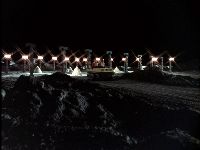

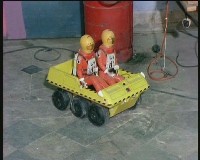
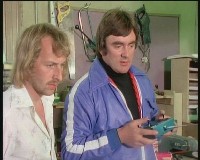
A few wheeled models were motorised- the moonbuggies, and the laser tanks in The Infernal Machine. See the SFX behind the scenes footage.
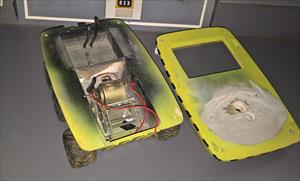
The electric motor inside the 8 inch/20cm long moonbuggy. More photos

The electric motor inside the laser tanks. The model is built over a commercial 1/25th scale motorised Tamiya Chieftain tank kit. More photos
For landing and launching, the models would be hung on wires.

The wires are attached to the front and back of the Eagle spine. The wires also carried the electrical signal that released the freon gas. see more pictures (filming Wednesday 20 March 1974).


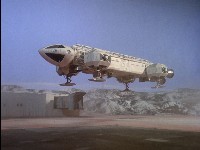
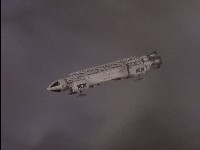



Wires were used sparingly, because they were sometimes visible - especially against lighter skies.
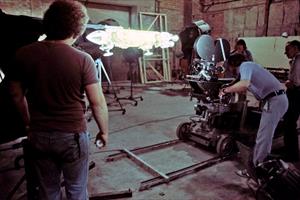


If possible, the models were not moved. The models were securely mounted in front of black velvet, with mountings hidden behind. The camera moved on a wheeled dolly on tracks, which is stable and moves smoothly. As seen on film, the spaceship appeared to move.
The camera dolly is moved manually on the track, so if the movement must be repeated (for instance, two spaceships filmed with multiple exposures) the "grip" who operates the dolly must match the speed by hand. On 2001: A Space Odyssey, the camera move was automated with worm gears controlled by synchro (selsyn) motors, with extreme slow motion (4 seconds per frame). The same model could then be filmed in multiple passes, on the same film, with exact precision.
In 1976, John Dykstra automated the camera with integrated circuits, creating Dykstraflex, the first digital motion control system. The Star Wars models were filmed like those in Space: 1999, with the model fixed to a static mounting, and the camera moving. But because the camera movement was automated, they could create more complex moves, and high quality mattes in separate passes. In combination with blue-screen and the larger negative area of 35mm Vista Vision, the digital motion control set the standard for model effects until they were replaced by fully computer generated imagery.
Some shots were created with the camera on its side or pointing upwards.

Explosions in space were always filmed with the camera pointed up at the studio ceiling. Sparks and debris would fall to camera. If they had been filmed conventionally, the explosion would visibly fall under gravity. The technique was generally used in combination with a editing cut.

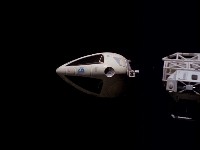
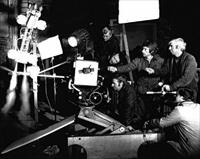
Filming the Eagle command module separation from Dragon's Domain. The camera is on its side (on screen, down is to the left, up to the right). In the on-screen shot, the freon jets are not visible. Nick Allder has his back to camera bottom right. Terry Schubert is above him on the right. David Litchfield is behind the camera, head at an angle.

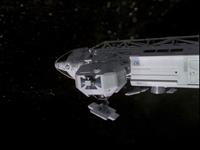
These Eagle shots from Space Brain and The Mark Of Archanon were also created with the camera on its side (up is to the left, down to the right). In the first, shaving foam is dropped onto the Eagle; in the second, glitter and plaster asteroids are dropped. The Eagle foot pads of the third Eagle are looser than the other models, so the pads are angled awkwardly.
Copyright Martin Willey